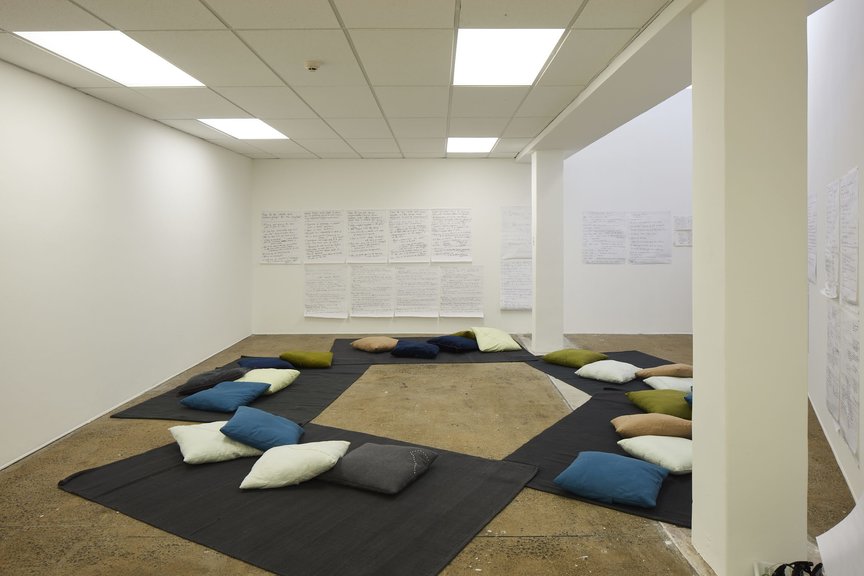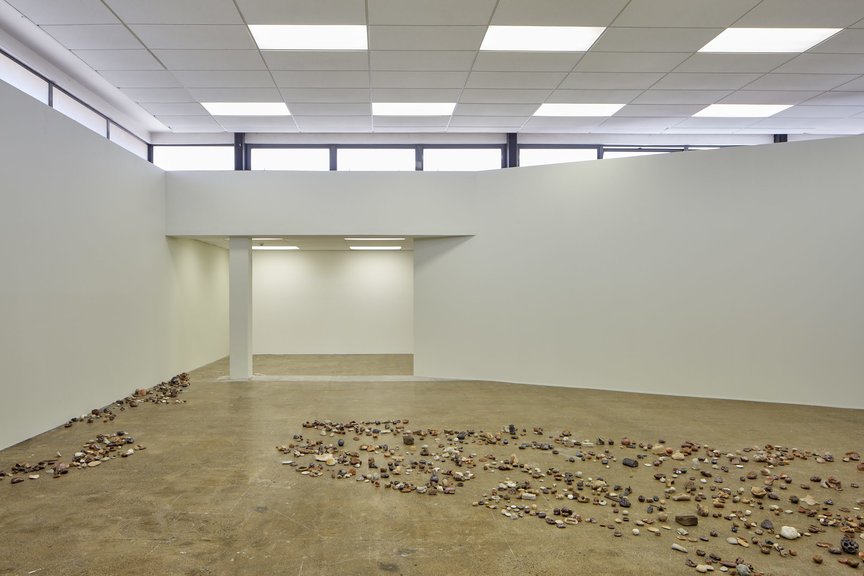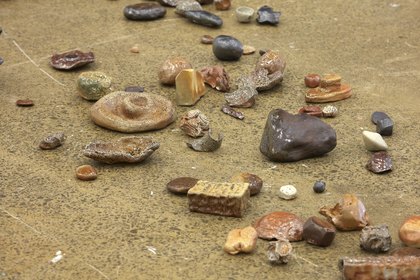-
From Current Issue
-
- Editor’s Letter Fire in the Heart
- Reviews I Gusti Ayu Kadek Murniasih
- Reviews 11th Seoul Mediacity Biennale: “One Escape at a Time”
- Dispatch Networked China
- One on One Monira Al Qadiri on Yukio Mishima
- Essays The rise of independent art spaces in pandemic-era Shanghai
- Features Tuan Andrew Nguyen
- Table of Contents
- Web Exclusives
- Archive
- Subscribe

R
E
V N
E
X
T
Installation view of Riverbed, 2018, wood-fired ceramic rocks, dimensions variable, made by workshop participants for FIONA JACK’s “Riverbed” at Artspace NZ, Auckland, 2018–19. All photos by Sam Hartnett; courtesy Artspace NZ.
In 2010, Fiona Jack was introduced by her uncle to the story of her great grand aunt, the Scottish suffragette and communist Helen Crawfurd (1877–1954). Enthralled with Crawfurd’s life and her autobiography, Jack created a number of collaborative works in 2018, including a series of books, sculptures and ceramics, exploring the contemporary resonances of the causes that Crawfurd championed, such as women’s and worker’s rights. “Riverbed,” at Auckland’s Artspace NZ, was a development of such investigations into Crawfurd’s political narratives.
Jack situated “Riverbed” within a network of communities in the wider Auckland region. The exhibition saw her working with the social justice activist and former Green Party parliamentarian Sue Bradford, whom she views as a contemporary counterpart of Crawfurd’s. Bradford was a controversial figure in the New Zealand political landscape of the 1980s and ’90s due to her opposition to the maturing neoliberal agenda of the time. Like Crawfurd, Bradford advocated for various Indigenous causes, worker’s rights and women’s groups, long before the current social-justice warrior model mainstreamed such polity.
As part of the show, Jack and Bradford facilitated a series of workshops at Artspace NZ and Kotare Trust, an education and social advisory service that Bradford operates, over the last quarter of 2018. During the events, participants were invited to shape rock forms out of clay while engaging in directed group discussions around a range of social issues. Some of the topics that were broached include local iwi (Maori tribe) histories, how to build effective community organisations, women’s capacity building, political reform and revolution, and transformative contemporary art school structures.
The clay rocks made during these dialogues were then arranged like a riverbed spreading across the floor of Artspace NZ’s gallery space. The unique shapes reflect the social conditions of their making, and exuded a totemic charm. I was reminded of the folkloric tale, memorably brought to life in director Wong Kar-wai’s film, In the Mood for Love (2000), in which one can whisper their secrets and desires into the hollow of a tree, literalizing the object of desire. The installation also expressed, in an idiomatic sense, that while a rock can alter the course of a river, the river will likewise shape the rock, not through force but its persistence. Jack thus conveys the notion of attaining social transformation through steadfast educational processes, echoing the ideologies of Bradford and Crawfurd.
By working with a dialogical framework, Jack and Bradford situated the exhibition in an idealized political present, as well as a somewhat imaginary, nostalgic past, when Bradford and Crawfurd’s shared values were neither so partisan, nor so dangerous. “Riverbed,” then, felt like an entreaty to milder times, when an emphasis on listening, engagement, and the search for common values was at the heart of the discourse on societal evolution.
This nostalgic idealism led to a sense of sadness, which sat at the core of Jack’s exhibition. The utopic visions of socialism belong to a more innocent time: before the Soviet purges; Mao Zedong’s version of Communism, based on a personality cult; the Jonestown mass suicides; and Auckland’s Centrepoint Commune controversy. They fit to a time of experimentation, when failure was permissible, and when collectives of people squeezing clay and talking about the problems of the working class was both innocent and revolutionary.
While “Riverbed”—as both an exhibition and a set of propositions for social redevelopment—elicited a sense of well-deserved admiration for probing beyond theories of humanity’s co-existence, it also felt dated and, perhaps worse, obsolete. Though formed by many hands, its nostalgia was impossibly perfect, and can only be hardened in fire.
Fiona Jack’s “Riverbed” is on view at Artspace NZ, Auckland, until March 2, 2019.
To read more of ArtAsiaPacific’s articles, visit our Digital Library.


















